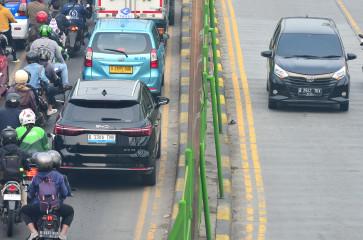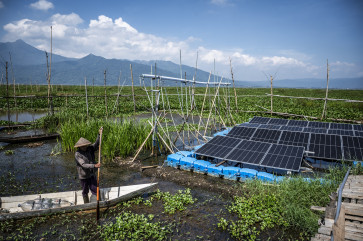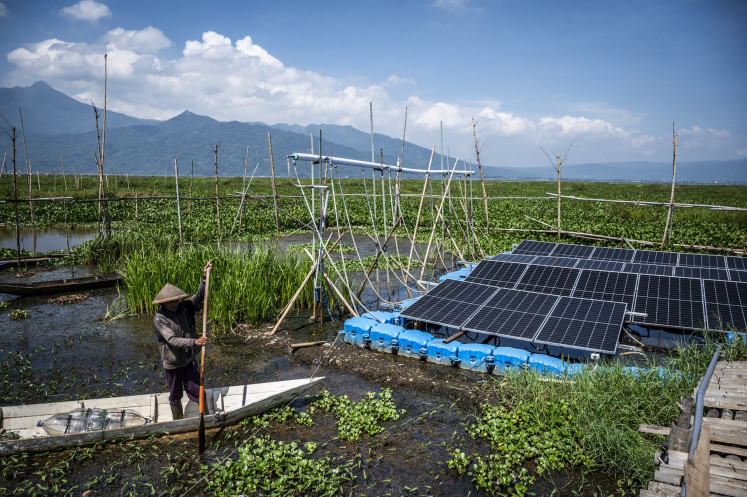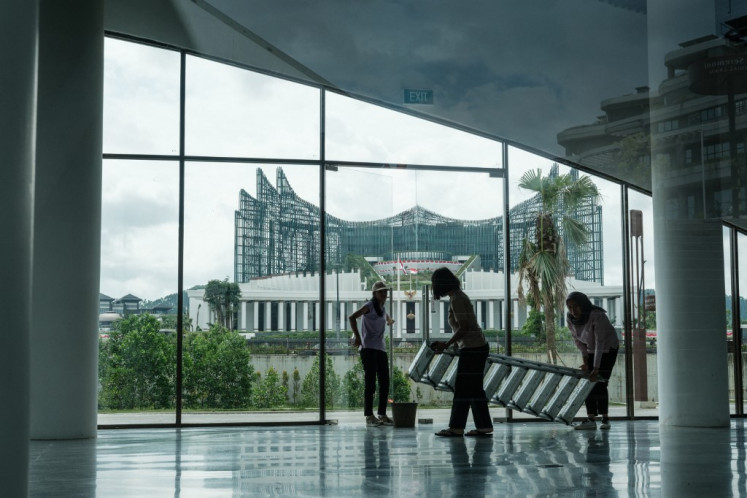Popular Reads
Top Results
Can't find what you're looking for?
View all search resultsPopular Reads
Top Results
Can't find what you're looking for?
View all search resultsLessons learned in relocation of Mount Sinabung survivors
The intense activity of Mount Sinabung has been ongoing for the past year
Change text size
Gift Premium Articles
to Anyone
T
he intense activity of Mount Sinabung has been ongoing for the past year. The first eruption was on Sept. 15, 2013, and they have continued until this month, displacing some 26,000 residents.
The incident that killed 14 people early this year near the volcano has led to calls for a permanent relocation of villagers. On Oct. 29 President Joko 'Jokowi' Widodo's visit sped up the decision-making process over the allocation of relocation space. This is indeed an important step for the residents and other stakeholders around Sinabung.
However, post-disaster relocation planning is not a simple task and is understudied in Indonesia, compared with disaster-risk reduction planning, for instance. Our laboratory, Regional and Rural Planning, at the Bandung Institute of Technology (ITB) has tried to scrutinize these issues through several studies in areas affected by large- and small-scale disasters in Indonesia, such as the 2006 Yogyakarta earthquake, the 2009 West Sumatra earthquake, the 2009 West Java earthquake (2009), the 2013 Jakarta floods and the 2010 Merapi eruption.
To study disaster recovery is to examine the impacted areas after the incident for about three to five years, well after public attention has waned. Some of our findings from previous studies in other areas of Indonesia might provide insights for post-disaster relocation planning in Sinabung.
First, respect for social capital. Each area in Indonesia is unique, in particular rural areas where formal and informal structures exist. In the recovery from the 2009 earthquake of West Sumatra, the role of tungku tigo sajarangan was dominant in selecting the area for relocation. Tungku tigo sajarangan represents three groups of community leaders: The religious leaders (alim ulama), the intellectuals (cadiak pandai) and the cultural leaders (ninik mamak). In Sinabung, most affected people are from the Karo ethnic group. How have the existing rules and local organizational structures been involved in decision-making regarding relocation?
Second, settlement relocation should be able to maintain the community's livelihood. Often relocation fails because the government moves people away from the hazardous site but also makes less accessible their original economic sources.
In the relocation area, the evacuees usually have limited options for livelihood ' such as in the case of relocation around Mount Merapi in 1994.
People were moved 8 kilometers south from the original Turgo village, located on the nearest slope of Merapi. Consequently, they could not feed their cattle and slowly, people moved back to their previous village. A similar situation has often been seen in relocation areas following the eruptions of Kelud in East Java and Papandayan in West Java.
Third, relocation should not induce another disaster. New relocation areas may pose potential for new disasters, for instance when new forest land is opened for survivors. Decision-makers must check whether there are other threats in the new area in which relocation is provided, such as landslides or flash floods.
Fourth, integration with spatial planning. Often, a temporary relocation becomes a permanent relocation. Therefore, relocation should be treated as another form of development. It needs to have proper and integrated infrastructure provisions, instead of being isolated. In the case of Sinabung the relocation area has to be integrated in the spatial plan of Tanah Karo regency. This should be accommodated later in the revised regional spatial and development plan and in the budget allocation for infrastructure development.
Fifth, standard social facilities in the relocation area. Families need to have standard facilities such as education, medical, social and religious facilities. These social functions can help communities ease their pain and trauma as well as helping them to take root in the relocation area.
Sixth, relocation can cause social conflict. One should ask how the native residents of the relocation area comprehend the incoming flux of evacuees into their neighborhood. Are they involved in the decision-making process? Are their voices heard and what are their expectations? Relocation should not cause new problems.
Many relocation projects have failed because of the lack of involvement of the current residents who are to become neighbors. In this process, a complete stakeholder analysis should be involved.
Seventh, public involvement through a community-based approach. Bottom-up planning through a community-based approach is one of the key factors for successful planning and development, including in the relocation process. The community should be involved in the decisions on housing allocation and location of infrastructure.
The approach should promote social interaction among the community who will be relocated and the original residents.
Finally, relocation should be used as an opportunity to increase resilience. Ultimately, the goal is to achieve disaster resilience in the new relocation area. It is important to influence the decision-making process to invest in disaster-mitigation measures.
To achieve this, disaster education should be launched for the stakeholders to improve, for instance, earthquake-risk perception, so that future mitigation efforts can be accepted at all levels.
_______________
The writer is a lecturer at the school of architecture, planning and policy development, Bandung Institute of Technology.










